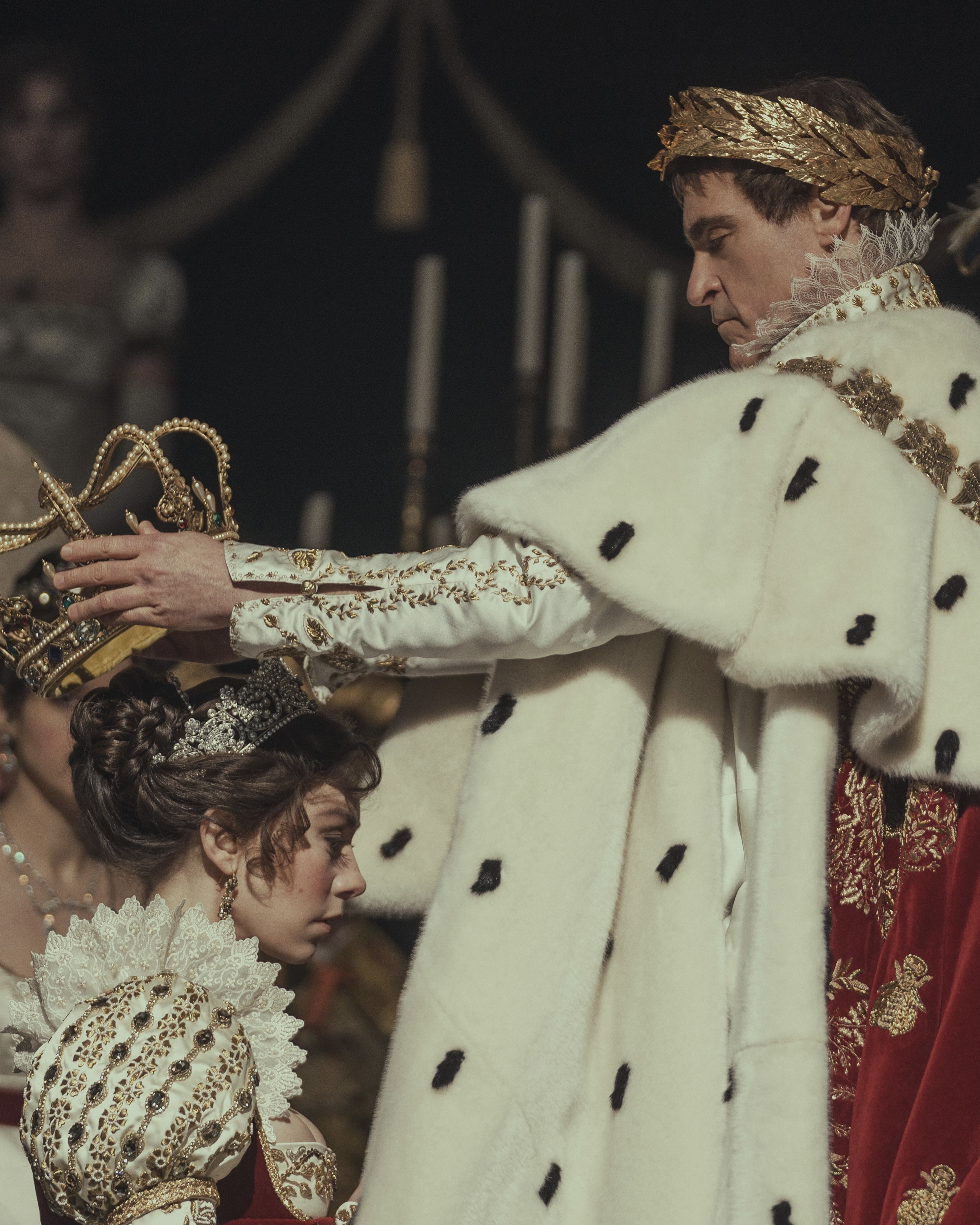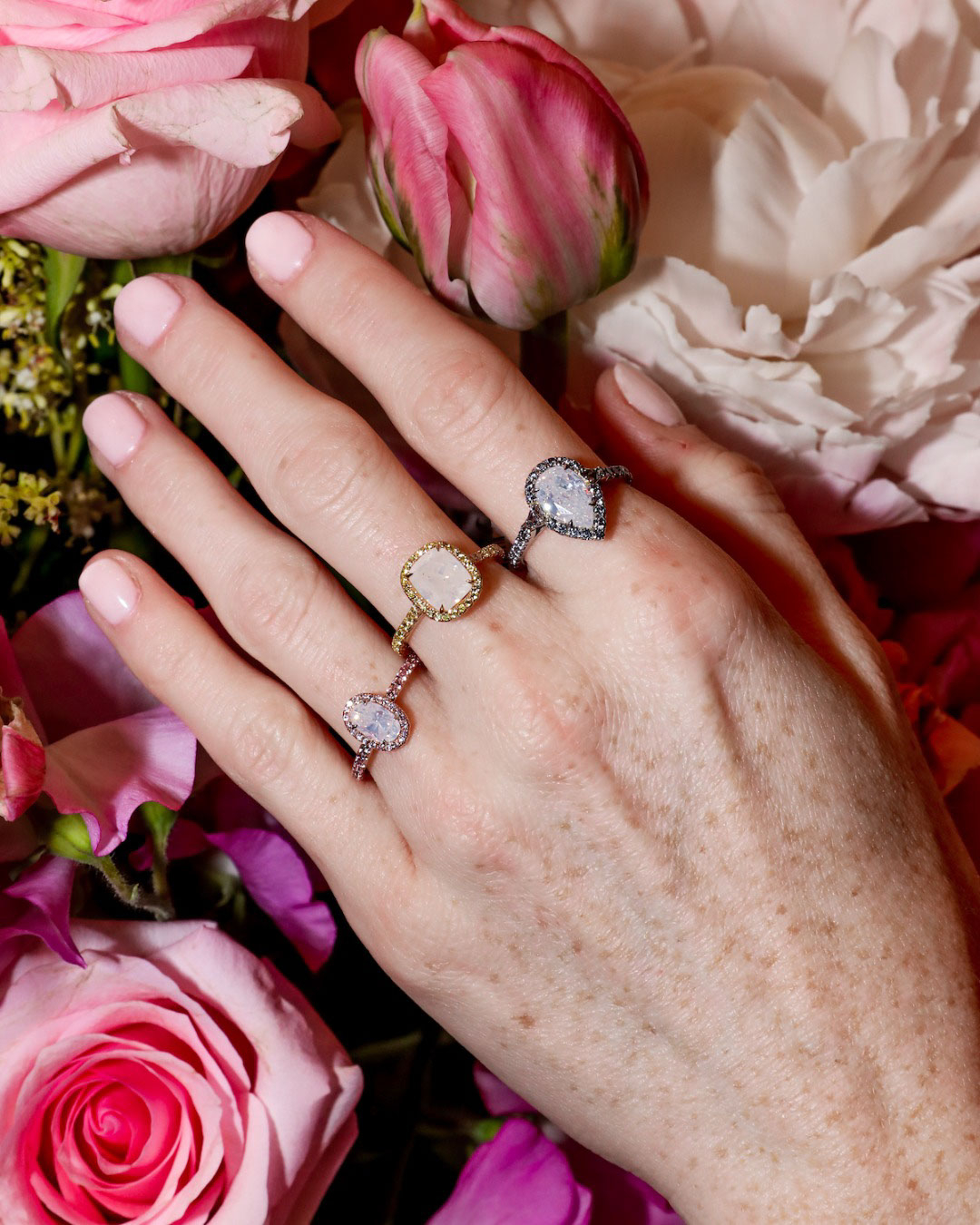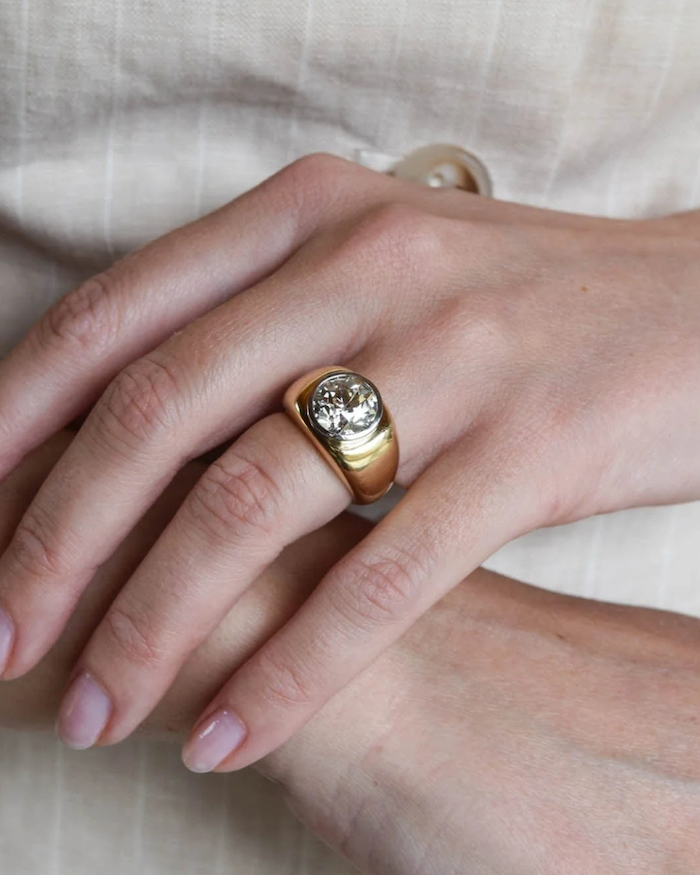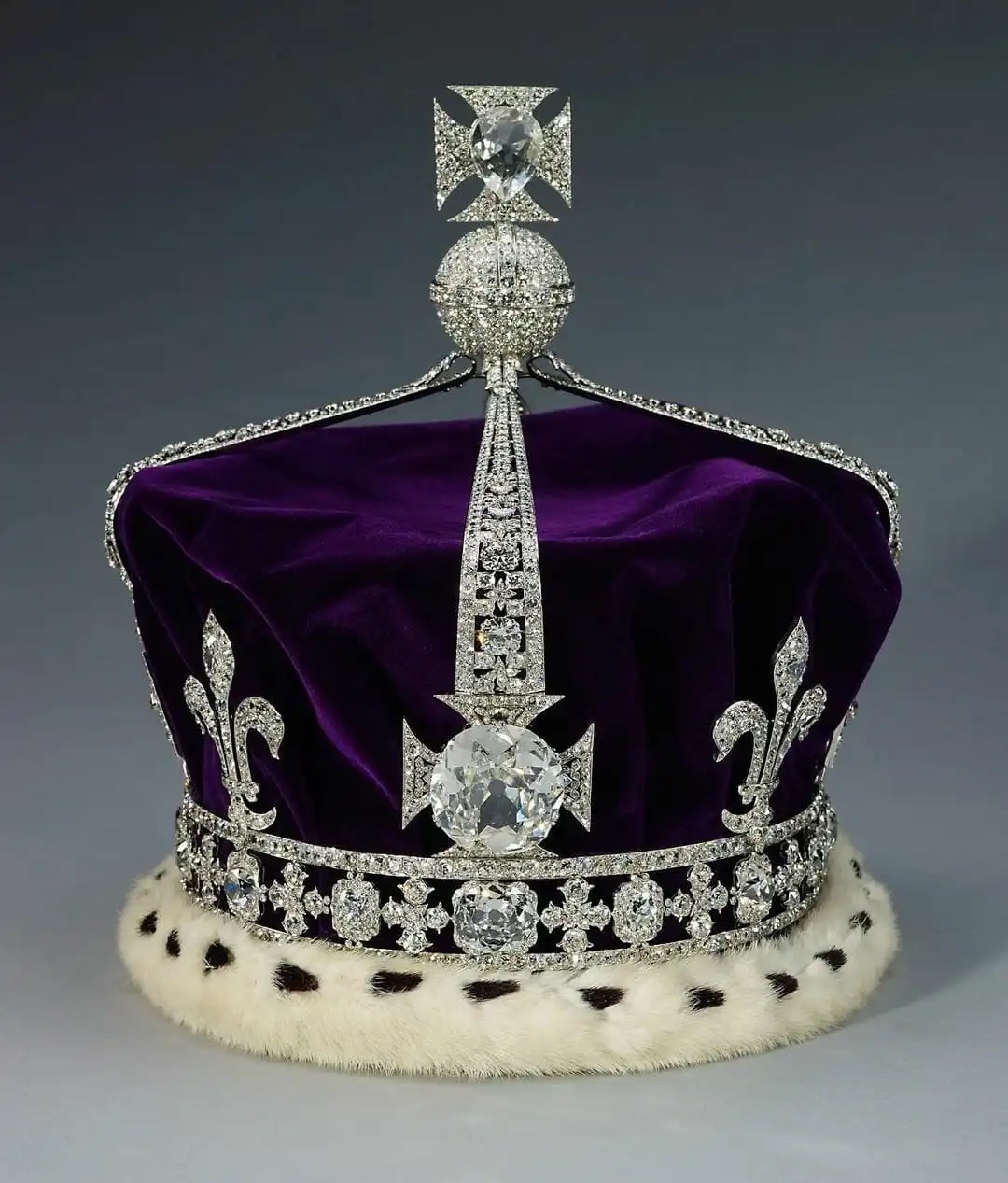Historic Diamonds / Royal Stories
The Untold Story Behind the Napoleon Diamond Necklace’s Rare Georgian Twin
The legendary Napoleon Diamond Necklace represents one of history’s most opulent displays of power and artistry. Over two centuries later, a newly uncovered diamond rivière from the same era mirrors its rarity.
Published July 16, 2025
Written by: Grant Mobley
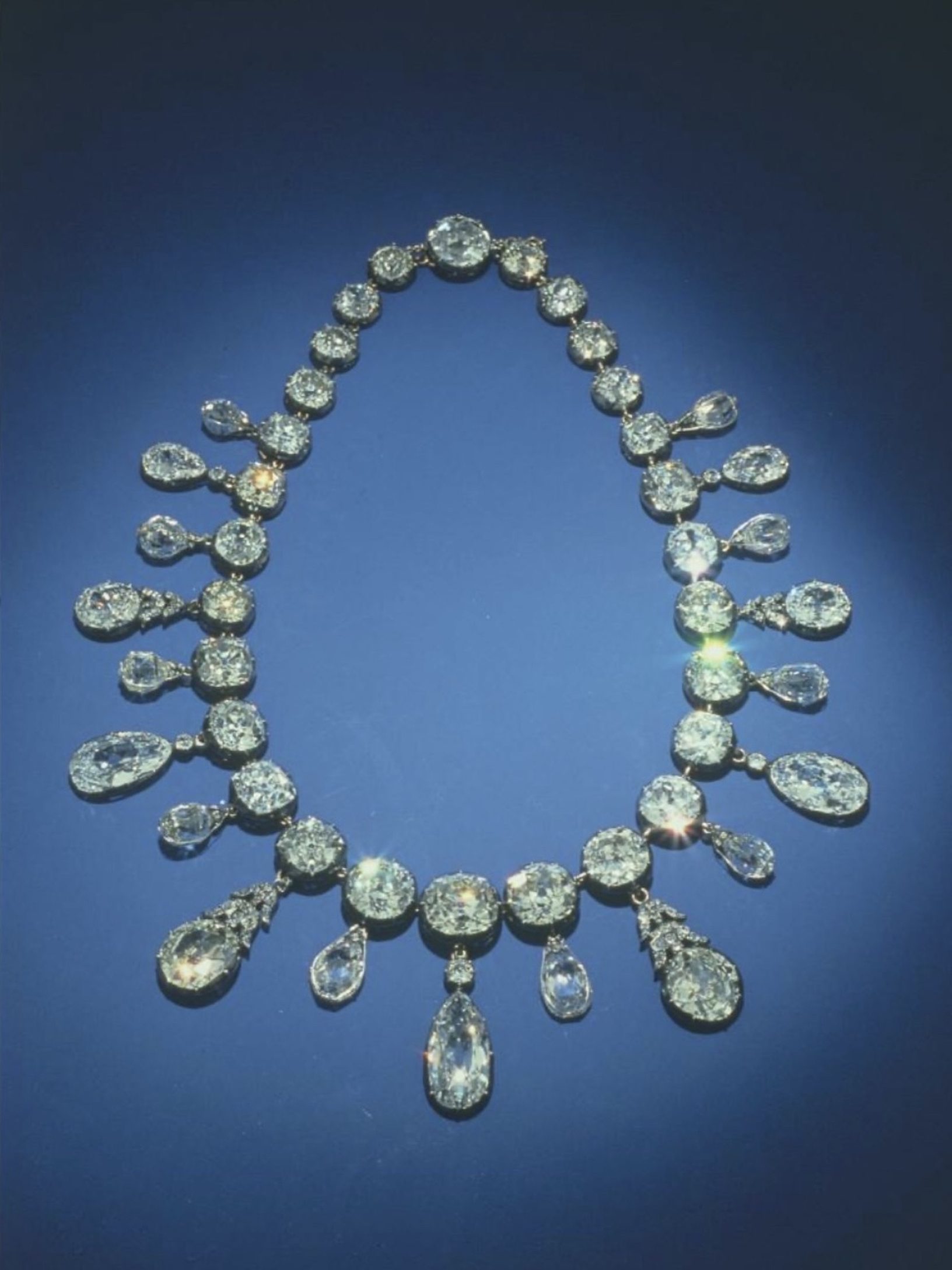
At the Smithsonian’s National Museum of Natural History in Washington, D.C., a glittering symbol of imperial opulence and enduring craftsmanship sits behind glass: the Napoleon Diamond Necklace. Commissioned in 1811 by Emperor Napoleon Bonaparte to celebrate the birth of his heir, the elaborate diamond necklace is a master class in early 19th-century jewelry, rich in history, technical brilliance and nearly unmatched extravagance.
More than 200 years later, a newly unveiled necklace by Hancocks London from the same period offers collectors or connoisseurs a rare opportunity to own a piece that closely parallels one of the most famous imperial jewels of them all. The Georgian diamond rivière necklace, dating to 1820, is a near-exact match to the base of Napoleon’s gift, as rare, as sophisticated, and as technically brilliant. The appearance of the necklace is every bit as rare as the diamonds it holds.
Meet the Expert

- Grant Mobley is the Jewelry & Watch Editor of Only Natural Diamonds.
- He is a GIA Diamonds Graduate.
- He has over 17 years of jewelry industry experience, starting with growing up in his family’s retail jewelry stores.
The History of the Napoleon Diamond Necklace


To appreciate the significance of both the Napoleon Diamond Necklace and the recently surfaced rivière, we must first consider the meteoric rise, and equally epic fall, of Napoleon I. In 1810, after divorcing Empress Joséphine for her failure to produce a male heir, Napoleon married 18-year-old Archduchess Marie Louise of Austria, cementing a political alliance with the powerful Habsburg dynasty. One year later, their son, Napoleon II—dubbed the “King of Rome”—was born. In celebration, and as an act of political pageantry, Napoleon commissioned several parures and a grand diamond necklace from his court jeweler, Marie-Étienne Nitôt, founder of the house that would later become Chaumet.
Completed in 1811 by Nitôt et Fils, the Napoleon Diamond Necklace consists of 234 diamonds totaling an estimated 263 carats. Among them are 28 large old mine-cut diamonds, 10 briolettes, and nine suspended pendeloques set with pear– and oval-shaped diamonds. The largest diamond weighs approximately 10.4 carats, and each briolette mount holds 12 additional rose-cut diamonds. At the time, diamonds could only be sourced from two known diamond-producing regions, India and Brazil, making such a collection an extraordinary feat.
How Much Was the Napoleon Diamond Necklace Worth?

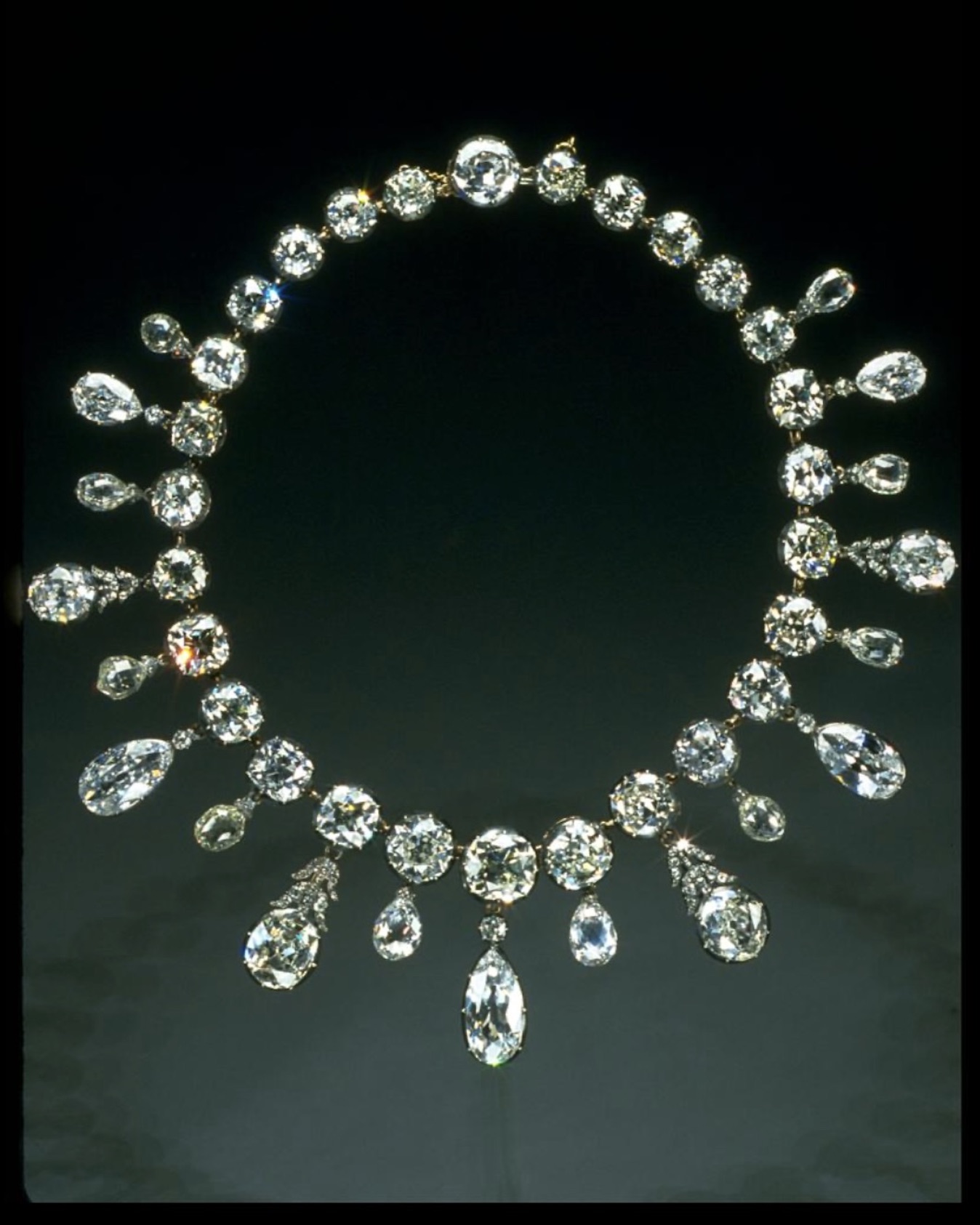
The sheer cost of the piece speaks volumes. Napoleon had the necklace appraised by the Viennese jeweler Ernst Paltscho and ensured that the value, 376,274 French francs, was made public. This figure exceeded the entire annual household budget of the Empress, a strategic display of wealth and dominance as Europe watched France’s imperial ambitions unfold.
After Napoleon’s downfall in 1814, Marie-Louise returned to Austria with her personal jewelry, including the necklace. It remained in the Habsburg family for generations, passing from the Empress to Archduchess Sophie and eventually to Archduke Karl Ludwig. In 1948, Prince Franz Joseph of Liechtenstein sold the piece, and it was later acquired by American heiress and philanthropist Marjorie Merriweather Post, who purchased it from Harry Winston. Post gifted it to the Smithsonian in 1962, where it now sits on display alongside the famed Marie-Louise Diadem, another imperial jewel with Habsburg roots.
A Rare Twin to the Napoleon Diamond Necklace: Georgian Rivière by Hancocks London
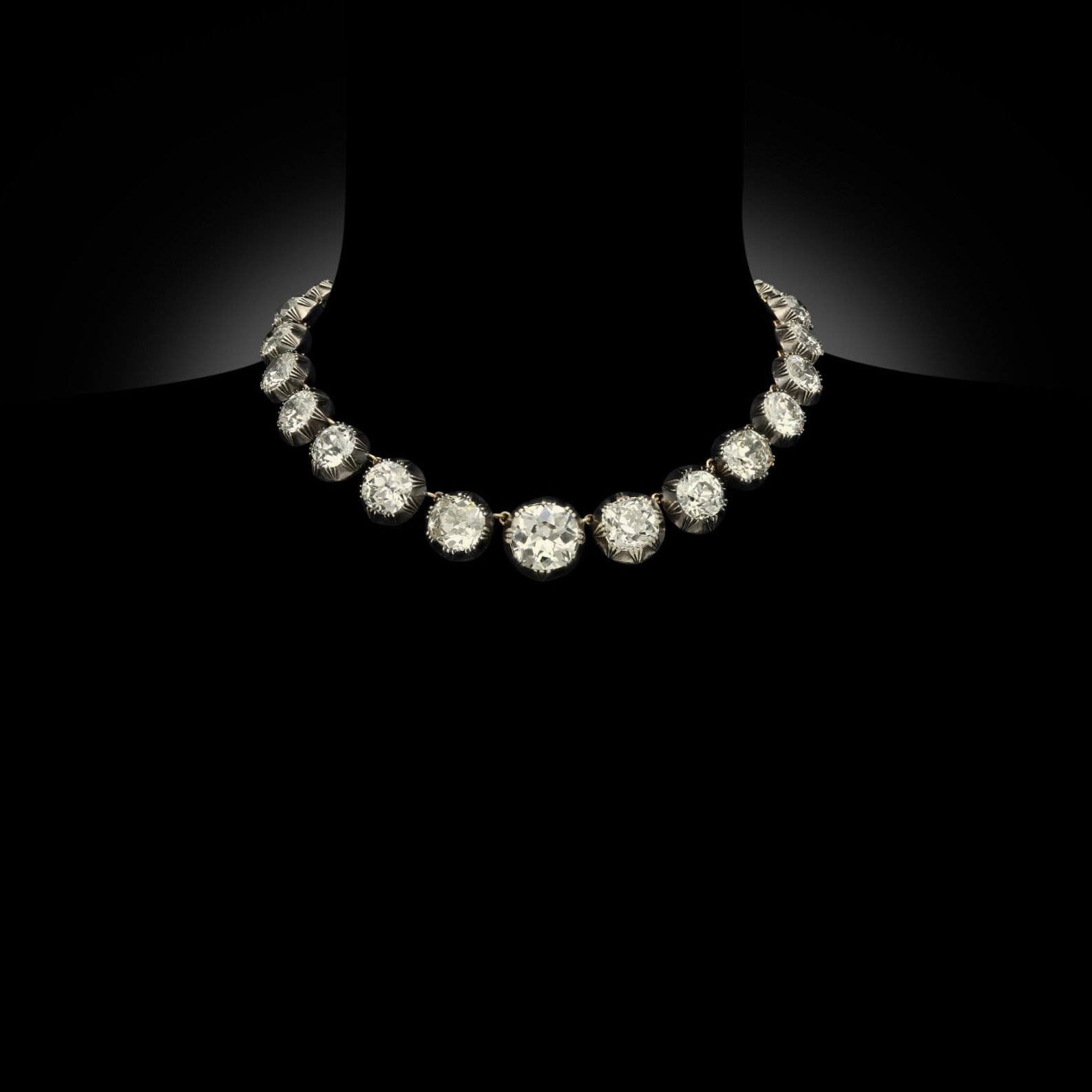
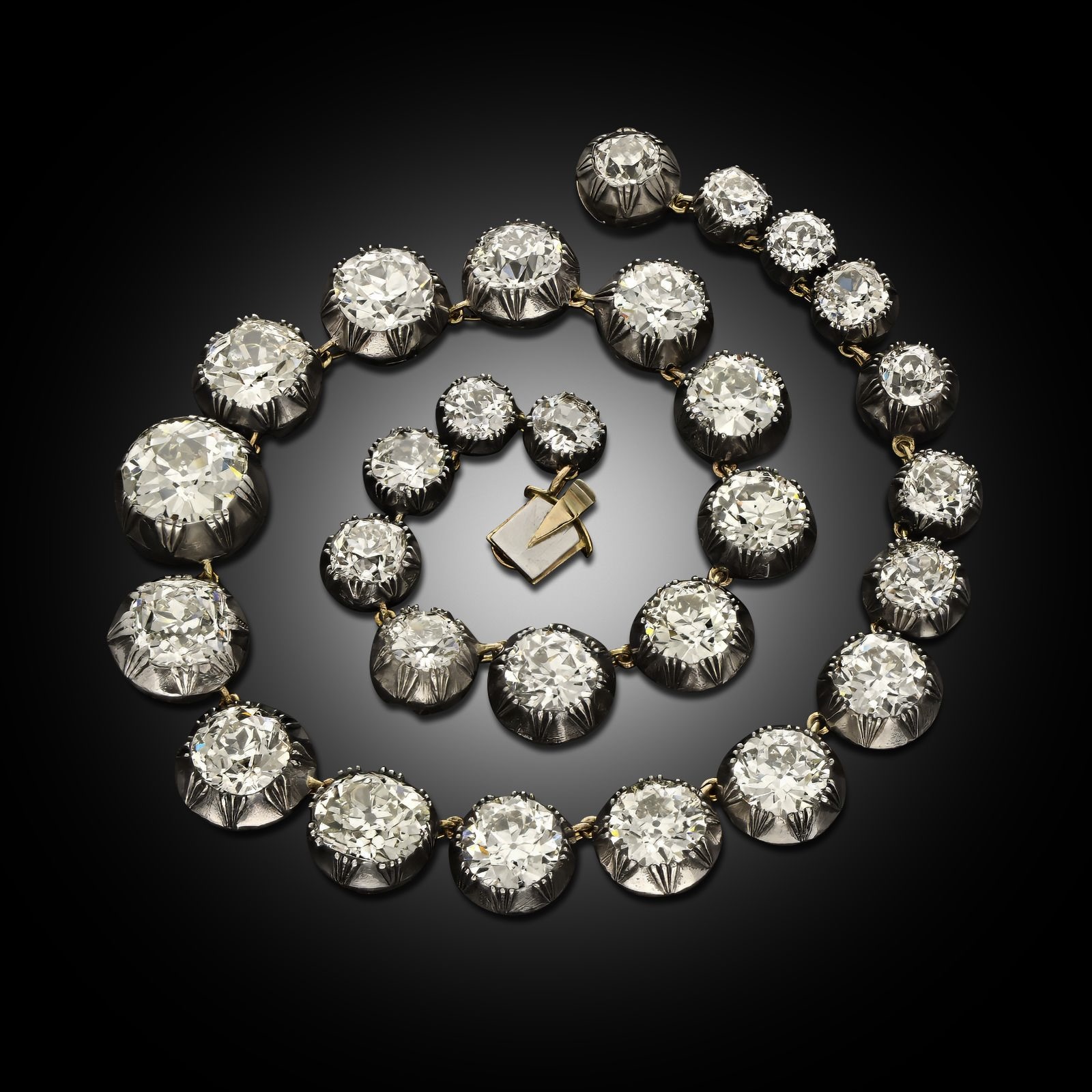
While the Napoleon Necklace remains a national treasure, its elegant rivière base, without the suspended pendeloques, composed of matched old mine diamonds in simple cut-down collets, is echoed in the extraordinary rivière necklace now offered by Hancocks London. Dating to 1820, this necklace features 28 old mine brilliant-cut diamonds totaling approximately 110 carats, with the largest center stone estimated at 9.26 carats—remarkably close in size and proportion to the centerpiece of the Napoleon necklace.
Each diamond is set in a classic Georgian silver-topped gold collet and linked at the back with concealed hooks. The sophisticated and adjustable construction is far ahead of its time. Evidence of fittings suggests that pendeloques were once suspended from the base, much like the elaborate diamond fringe of the Napoleon piece, further underscoring its high-society provenance.
Where Did the Diamonds in the Napoleon Necklace Come From?
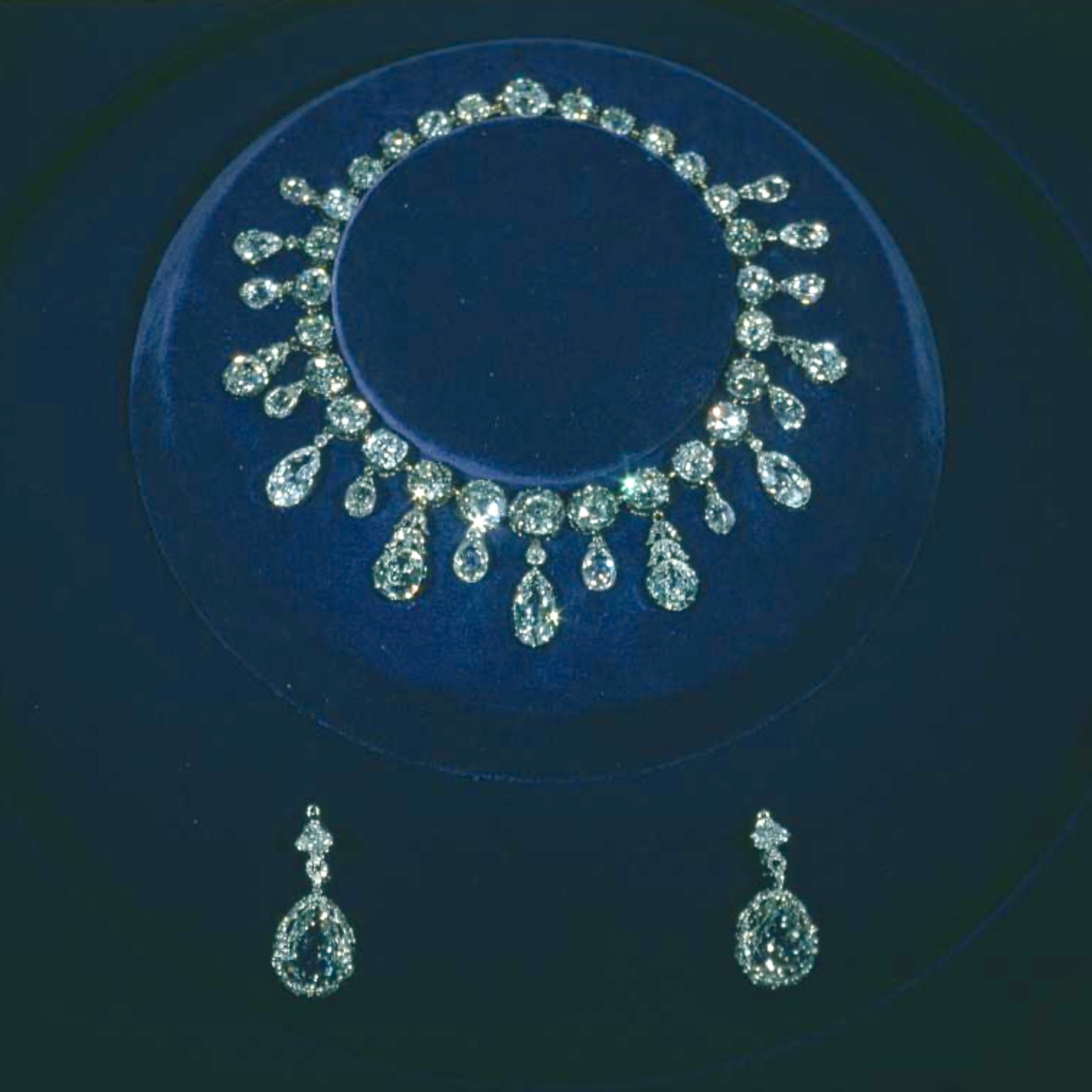
The era in which these necklaces were created is part of what makes them truly exceptional. The early 1800s predate the discovery of diamonds in South Africa by more than 50 years. At the time, the only sources for gem-quality diamonds were the alluvial mines of Golconda, India, and small mines in Brazil, both of which produced extremely limited quantities. By the 19th century, the supply of diamonds from India had dwindled to nearly nothing.
Acquiring over 100 carats of well-matched, large diamonds would have required immense resources and connections. As a result, such necklaces were reserved almost exclusively for royalty and the aristocracy. These are not merely jewels; they are political and cultural artifacts that embody the wealth and influence of a privileged few.
Why Rivière Necklaces Like Napoleon’s Are Still Coveted Today
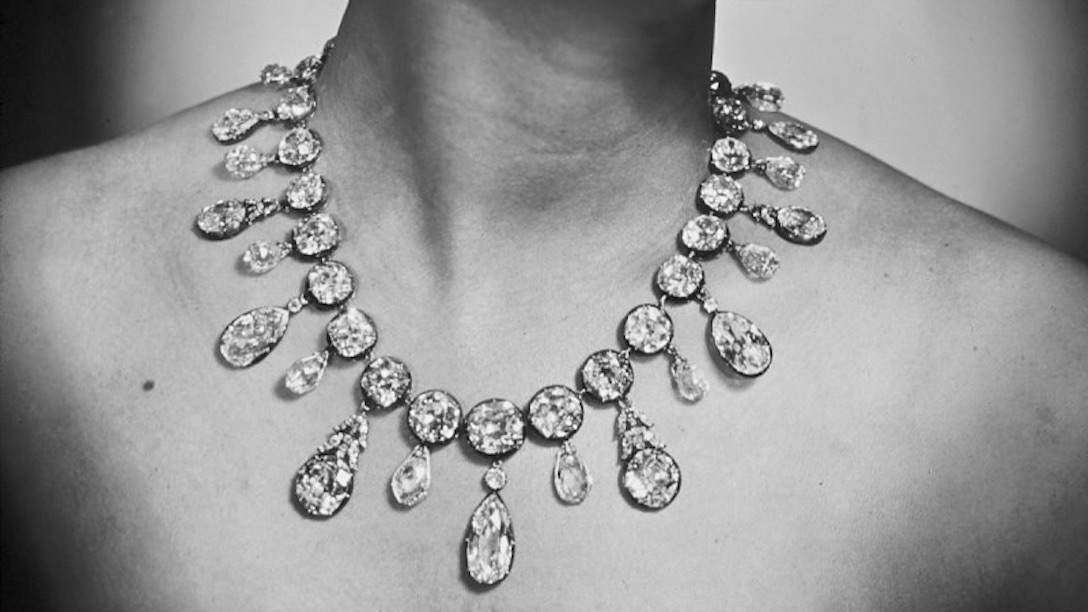
Rivière necklaces, a term referring to the “river-like” strand of continuous, graduated stones, were a favored style among European nobility during the 18th and 19th centuries. With their evenly brilliant appearance, these necklaces could serve as everyday staples or be layered with other necklaces to signal wealth, taste, and social status. Though the rivière gained popularity more than 200 years ago, its timeless design remains one of the most coveted additions to any jewelry collection.
Hancocks’ 110-carat rivière represents a once-in-a-generation acquisition. Not only is it a design parallel to the Napoleon Diamond Necklace, but it’s one of the few surviving Georgian necklaces of this caliber and condition to enter the market in decades.
The Enduring Legacy of the Napoleon Diamond Necklace
While the Napoleon Diamond Necklace remains securely housed in the public domain at the Smithsonian, its elegance and legacy are reflected in the Georgian diamond rivière necklace now part of the Hancocks London collection. Both pieces represent a golden age of craftsmanship, showcasing diamonds that were once within the reach only of society’s highest tiers.
For those who study or admire antique jewelry, these historic works offer a tangible connection to the past. As we rediscover these treasures, it becomes clear that the allure of old-cut diamonds and antique design is not fading —it’s stronger than ever.

